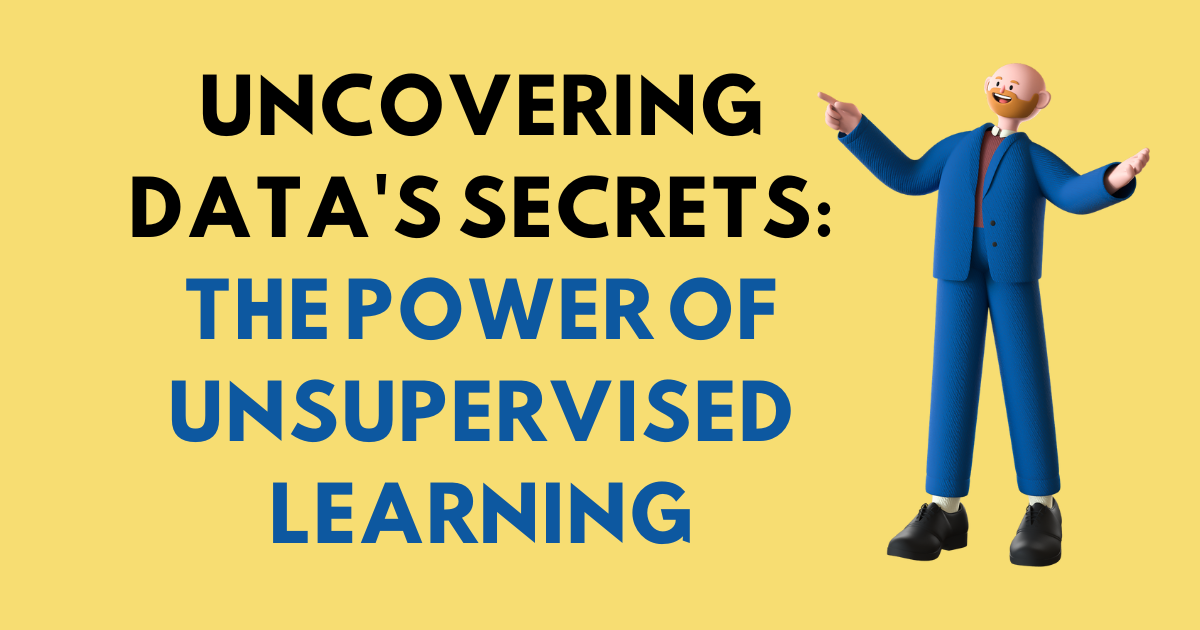Unsupervised Learning: Uncovering Patterns Without Labels
 S.S.S DHYUTHIDHAR
S.S.S DHYUTHIDHAR
Hey everyone, I'm Dhyuthidhar Saraswathula! If you're interested in computer science and AI, this blog will take you into the world of Unsupervised Learning. If you've been following my posts, you might already have some familiarity with the basics. Today, let's dive deeper!
Buckle up—let’s get started!
Introduction
Unsupervised learning is a powerful branch of machine learning. It enables machines to detect patterns and structures in data without explicit labels or instructions. This approach is valuable for datasets without labels, where labelling can be expensive, time-consuming, or unfeasible. In this blog, we'll explore applications, techniques, and challenges of unsupervised learning, uncovering this core facet of artificial intelligence.
Key Techniques in Unsupervised Learning
Unsupervised learning has several techniques, each designed for specific data challenges. Here are the most widely used techniques:
Clustering
Purpose: Clustering groups data points based on similarity.
Types:
Exclusive Clustering: Each point belongs to only one cluster.
Overlapping Clustering: A point can belong to multiple clusters with varying association levels.
Hierarchical Clustering: Forms a hierarchy of clusters.
Agglomerative: Merges small clusters into larger ones.
Divisive: Splits larger clusters into smaller ones.
Probabilistic Clustering: Uses probability distributions to form clusters.
K-Means Clustering: Partitions data into k clusters based on centroid proximity.
DBSCAN: Density-based clustering ideal for data with noise and irregular shapes.
OPTICS: Like DBSCAN but works well with varying densities.
Dimensionality Reduction
Purpose: Reduces data complexity by minimizing the number of features, making it easier to analyze.
- Techniques: Feature selection (selects important features) and feature extraction (combines features).
Common Methods:
Principal Component Analysis (PCA): A linear technique reducing data dimensions by identifying orthogonal components.
t-SNE: A non-linear method effective for visualizing high-dimensional data in two or three dimensions.
Autoencoders: Neural networks that learn compressed representations of data, useful for anomaly detection and data denoising.
Association Rules
Purpose: Find relationships between variables, often used in market basket analysis.
Apriori Algorithm: Expands frequent itemsets to generate association rules.
FP-Growth: Uses an FP-tree for efficient frequent pattern discovery without candidate generation.
Anomaly Detection
Purpose: Identifies data points significantly different from the norm, useful in fraud detection.
Isolation Forest: Quickly isolates anomalies through random partitions.
One-Class SVM: Builds a boundary around normal data to detect outliers.
Applications of Unsupervised Learning
Unsupervised learning supports diverse applications across industries:
Customer Segmentation: Clusters customers by behavior for personalized marketing.
Financial Anomaly Detection: Detects fraud by identifying irregular transactions.
Image and Video Compression: Reduces media file sizes using dimensionality reduction.
Document Clustering: Groups similar documents in NLP for efficient text organization.
Gene Expression Analysis: Reveals patterns in bioinformatics, aiding in disease research.
Challenges and Future Directions
Unsupervised learning is powerful but presents challenges:
Lack of Evaluation Metrics: Without labelled data, evaluating model performance remains challenging.
Scalability: Processing large datasets can be computationally intensive.
Interpretability: Understanding complex patterns in unsupervised models can be difficult.
Integration with Supervised Learning: Combining unsupervised methods with supervised learning boosts performance, particularly when labeled data is scarce.
Conclusion
Unsupervised learning has vast potential, capable of revealing insights from unstructured data. As techniques advance, and integration with supervised methods grows, unsupervised learning is set to play an even more pivotal role in the future of AI.
Subscribe to my newsletter
Read articles from S.S.S DHYUTHIDHAR directly inside your inbox. Subscribe to the newsletter, and don't miss out.
Written by

S.S.S DHYUTHIDHAR
S.S.S DHYUTHIDHAR
I am a student. I am enthusiastic about learning new things.